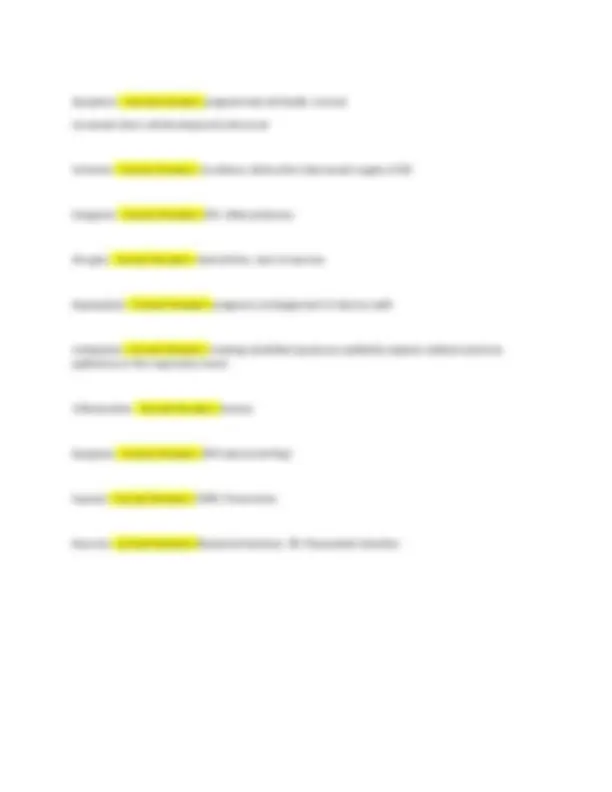



Study with the several resources on Docsity

Earn points by helping other students or get them with a premium plan


Prepare for your exams
Study with the several resources on Docsity

Earn points to download
Earn points by helping other students or get them with a premium plan
Community
Ask the community for help and clear up your study doubts
Discover the best universities in your country according to Docsity users
Free resources
Download our free guides on studying techniques, anxiety management strategies, and thesis advice from Docsity tutors
A series of questions and answers related to pathophysiology, covering topics such as homeostasis, cellular damage, and disease processes. It is a valuable resource for students studying basic medical concepts and can be used for self-assessment or as a study guide.
Typology: Exams
1 / 3

This page cannot be seen from the preview
Don't miss anything!


[COMPANY NAME] [Company address]
What is the term used to describe a relative balance in body functions? - Correct Answers: Homeostasis If the term physiology refers to a branch of biology that deals with the function and activities of life or living matter, i.e. organs, tissue, or cells, what is pathophysiology? - Correct Answers: changes that result for disease Give an example of the pathophysiology of an organ, tissue or cell. - Correct Answers: organ: Ischemia tissue: Gangrene cell: dysplasia What are the three levels of prevention? Give examples of each - Correct Answers: Primary: vaccines Secondary: screenings Tertiary: rehabilitation What are some causes of cellular damage - Correct Answers: genetics, nutritional, infectious, environmental Reduced tissue size or mass - Correct Answers: Atrophy increased tissue size or mass - Correct Answers: hypertrophy varies in size and shape - Correct Answers: Dysplasia undifferentiated cells-variable nuclear and structures - Correct Answers: Anaplasia Enlarged tissue mass - Correct Answers: hyperplasia and hypertrophy New Growth - Correct Answers: neoplasia Increase in size of individual cells - Correct Answers: hypertrophy